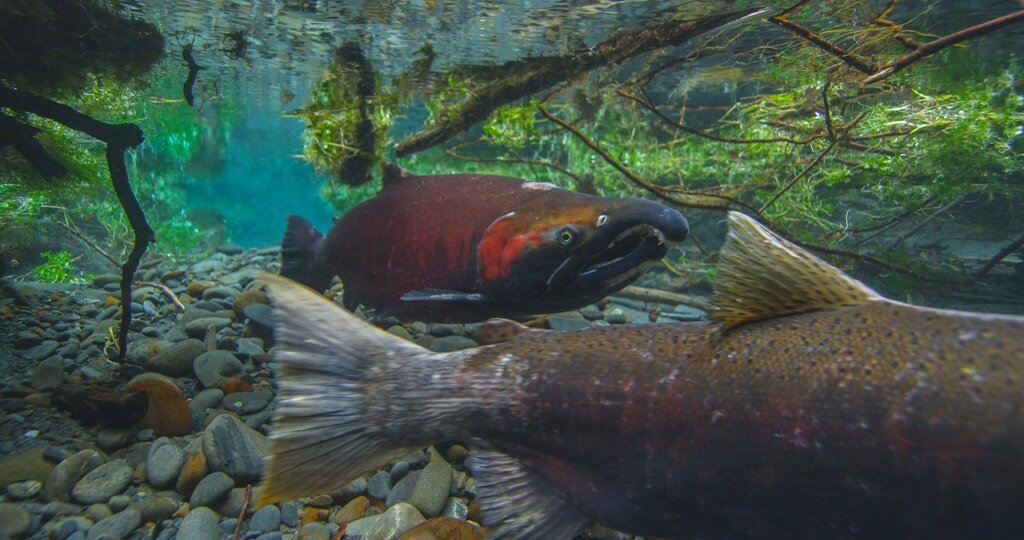Resources to Protect Salmon
Photo by Florian Graner
The Salish Sea is home to five species of native Pacific salmon (plus three related anadromous trout species) that spawn in our rivers. The salmon are born in freshwater and migrate to sea, where they feed and grow before returning to their mother stream to breed and die. This complex lifestyle ferries important marine nutrients into our Northwest forests, fertilizing trees and feeding everything from bugs to bears. While they’re at sea, one species of salmon, the Chinook, is the primary food source for our critically endangered southern resident killer whales.
Salmon are the cornerstone of our ecosystem, but many runs are in grave danger, particularly the wild Chinook. Restoring our salmon runs—which includes actions needed on habitat, prey, pollution, dams, climate change and more—is the greatest conservation challenge we face in the Pacific Northwest and is the only way to prevent the extinction of our resident killer whales. It also is a human rights imperative so Coast Salish tribal and First Nations may maintain their lifeways.
Fortunately, salmon restoration is within our power. However, it will take many actions large and small, from applying political pressure on decision-makers to making better individual choices to ensure we’re not inadvertently polluting local watersheds. Below is a starter list of actions we can all take to help recover and protect our most important fish. Let’s do this heavy lifting together.
Further viewing: Pacific Salmon and their Circle of Life, by Bob Turner
Everyday things you can do at home to help salmon and fight climate change:
Prevent harmful chemicals and pathogens from running off into stormwater and polluting the water
Wash your car at a carwash instead of on your driveway
Scoop and throw away your dog’s poop
Maintain your car and check for leaks. Quick and free visual leak inspection.
Safely dispose of motor oil, antifreeze, pesticides, paints, batteries, old medications, and other hazardous wastes at approved collection sites
Limit use of pesticides, weed killers, and fertilizers
Use less water, electricity, and other resources that increase greenhouse gas emissions and pollution
Walk, bike, ride share, or take public transportation
Install water-saving taps on your sinks and showers
Plant native plants that don’t need watering after they’re established
Choose products that don’t have packaging, like bulk items or loose produce
Install solar at your house
Care for your yard in an environmentally friendly way
Avoid paving or use permeable or porous pavement
Compost and use compost in your garden instead of fertilizer
Become a shore steward – and encourage others by displaying a Shore Steward sign on your property.
Volunteer to help with salmon restoration efforts:
Activities where you can participate include surveying spawning salmon, collecting water quality data for streams, planting native trees at stream restoration sites, removing invasive species, caring for native plants in a nursery, and performing community outreach to educate others about salmon conservation
Find your local district’s conservation group and get involved.
Find your local Regional Fisheries Enhancement Group and get involved.

